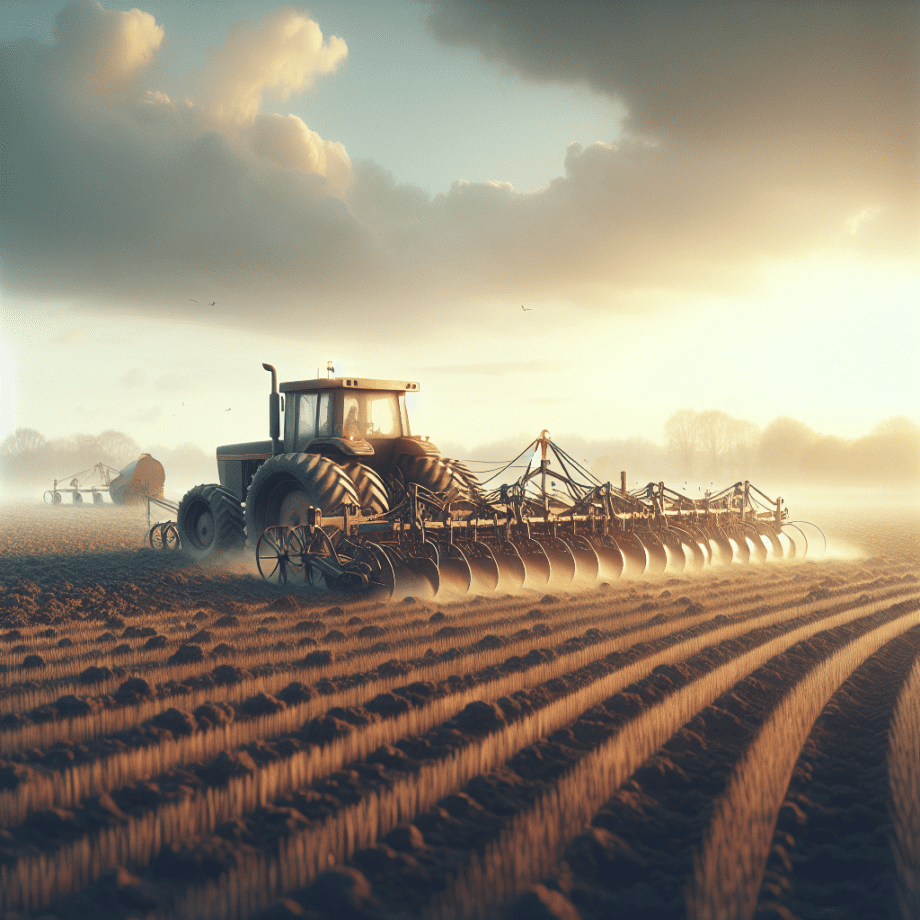Plows have been an essential tool in agriculture for centuries, playing a crucial role in preparing the soil for planting. This article delves into the history, types, and modern advancements of plows, highlighting their significance in contemporary farming practices.
History of Plows
The history of plows dates back to ancient civilizations, where early farmers used simple wooden implements to turn the soil. These rudimentary tools evolved over time, with significant advancements occurring during the Iron Age when metal plows were introduced. The introduction of iron plows marked a turning point in agricultural efficiency, allowing farmers to cultivate larger areas of land with less effort.
In the 18th and 19th centuries, the Industrial Revolution brought about further innovations in plow design. The development of the moldboard plow, which could turn over the soil more effectively, revolutionized farming practices. This period also saw the introduction of animal-drawn and later, steam-powered plows, which significantly increased the speed and efficiency of soil preparation.
Types of Plows
Moldboard Plows
Moldboard plows are one of the most common types of plows used in agriculture. They consist of a curved metal blade that cuts through the soil and turns it over, creating furrows. This type of plow is particularly effective in breaking up compacted soil and burying crop residues, which helps in weed control and soil aeration.
Chisel Plows
Chisel plows are designed to break up and aerate the soil without turning it over completely. They are equipped with narrow shanks that penetrate the soil, creating channels for air and water to reach the plant roots. Chisel plows are often used in conservation tillage practices, as they help maintain soil structure and reduce erosion.
Disc Plows
Disc plows use a series of concave metal discs to cut through the soil and turn it over. They are particularly effective in rocky or hard soils where traditional moldboard plows might struggle. Disc plows are also useful in breaking up large clods of soil and incorporating organic matter into the soil profile.
Subsoilers
Subsoilers are specialized plows designed to break up compacted soil layers deep below the surface. They are equipped with long, narrow shanks that penetrate the soil to depths of up to 24 inches. Subsoilers are often used to alleviate soil compaction caused by heavy machinery, improving water infiltration and root growth.
Modern Advancements in Plow Technology
Modern plow technology has seen significant advancements, driven by the need for increased efficiency and sustainability in agriculture. One of the most notable developments is the introduction of GPS-guided plows, which allow for precise soil preparation and reduced overlap. This technology not only saves time and fuel but also minimizes soil disturbance, promoting better soil health.
Another significant advancement is the development of adjustable plows, which can be customized to suit different soil types and conditions. These plows feature adjustable blades and shanks, allowing farmers to optimize their tillage practices for maximum efficiency and crop yield.
Additionally, the use of materials such as high-strength steel and advanced coatings has improved the durability and longevity of plows. These materials reduce wear and tear, ensuring that plows can withstand the rigors of modern farming practices.
The Role of Plows in Sustainable Agriculture
As the agricultural industry moves towards more sustainable practices, the role of plows in soil preparation is evolving. Conservation tillage practices, which aim to minimize soil disturbance and maintain soil health, are becoming increasingly popular. Plows such as chisel plows and subsoilers are well-suited to these practices, as they help improve soil structure and reduce erosion.
Cover cropping is another sustainable practice that benefits from the use of plows. By planting cover crops and incorporating them into the soil using plows, farmers can improve soil fertility, reduce weed pressure, and enhance water retention. This practice also helps sequester carbon in the soil, contributing to climate change mitigation efforts.
Conclusion
Plows have played a vital role in agriculture for centuries, evolving from simple wooden tools to sophisticated, GPS-guided machines. Their ability to prepare the soil for planting is essential for successful crop production. As the industry continues to embrace sustainable practices, the role of plows will continue to evolve, ensuring that they remain a cornerstone of modern agriculture.
